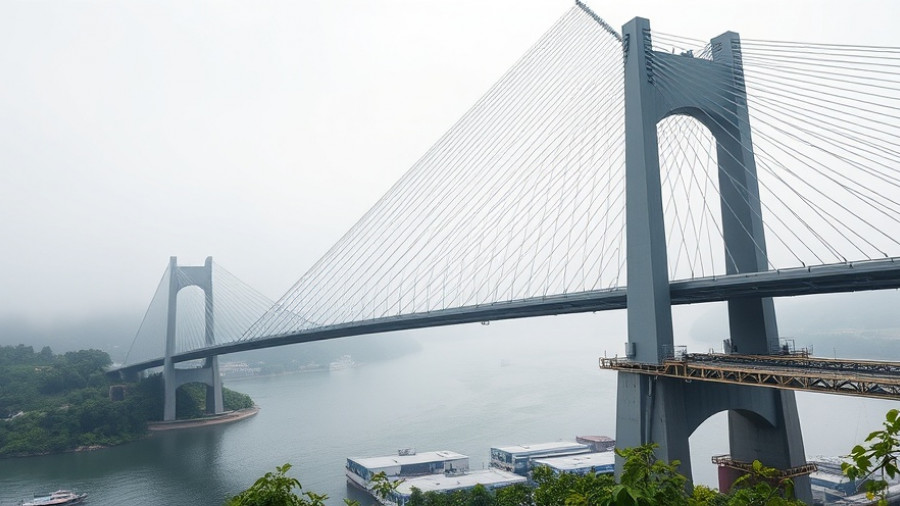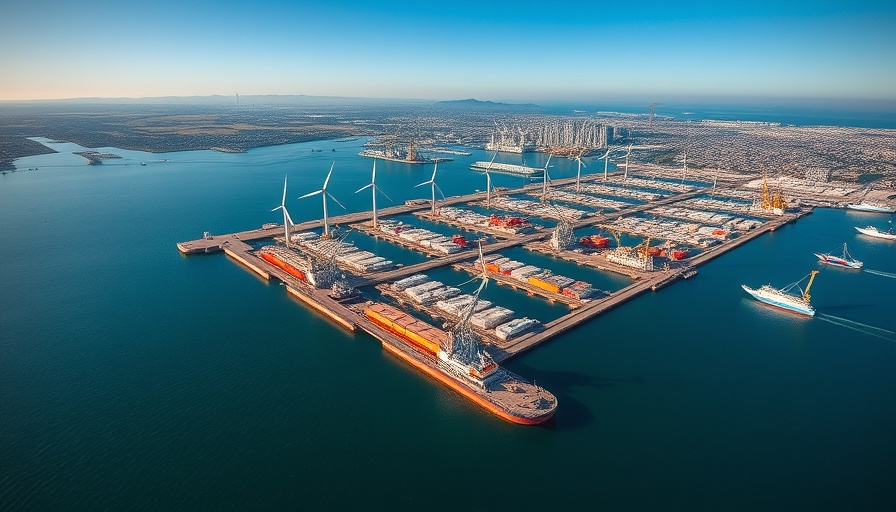
Breaking Records: The Changtai Yangtze River Bridge
In a remarkable milestone for engineering and architecture, China has unveiled the world’s longest cable-stayed bridge—the Changtai Yangtze River Bridge. With a striking main span of 3,960 feet (1,208 meters) and a total length of 10.3 kilometers (6.4 miles), this engineering marvel is not just a feat of design; it is a transformative addition to the transportation landscape of Jiangsu province. Travel times between Changzhou and Taizhou have plummeted from 80 minutes to an astonishing 20 minutes, showcasing how infrastructure can revolutionize connectivity.
Innovative Engineering Solutions
The bridge's design is groundbreaking: it uniquely integrates an expressway, a local road, and an intercity railway into one structure. This strategic design choice enhances the functional efficiency of the bridge, enabling it to accommodate various modes of transportation without compromising safety or comfort. The asymmetrical layout, where the railway line runs along one side rather than the center, challenges traditional bridge design while optimizing traffic management. As Qin Shunquan, chief scientist of the China Railway Group, pointed out, moving the railway out of the middle alleviates major traffic disruptions and improves emergency response capabilities.
Meet the Challenges of the Yangtze
Constructing a bridge over the mighty Yangtze River proved daunting due to its strong currents and unpredictable weather conditions. Engineers responded by reinforcing the bridge’s foundation, ensuring it withstands extreme pressure from both water and weather. Using satellite-guided cranes and advanced industrialized construction processes, the team set records for efficiency, including the fastest sinking speed for caissons in silty clay layers and the introduction of intelligent tower cranes capable of lifting ultra-heavy segments with millimeter-level precision.
The Future of Bridge Technology
Not only does the Changtai Bridge make history with its sheer size, but it also leads the way in technology integration. The use of 80 permanent sensors embedded within the bridge allows for real-time structural monitoring, ensuring safety and reliability in the long term. This intelligent monitoring is a testament to how digital technologies are reshaping traditional construction practices, allowing for data-driven maintenance and proactive management of structural integrity.
Economic Ripple Effects
Beyond the engineering marvel, the bridge is poised to stimulate economic growth in the Yangtze River Delta. By reducing commuting times and enhancing trade routes, the Changtai Bridge not only benefits local motorists but also strengthens the region's economic fabric. This is particularly vital as China continues to invest heavily in transportation infrastructure to support its growing economy.
Conclusion: Why This Matters to the Construction Industry
The Changtai Yangtze River Bridge stands as a beacon of innovation in the construction sector, illustrating the potential for modern infrastructure to transform communities. For clients of construction firms keen on embracing similar ambitious projects, this development highlights the importance of integrating advanced technology while adhering to sustainable practices. As construction continues to evolve, the lessons learned from the Changtai Bridge will undoubtedly inspire future projects aimed at enhancing both connectivity and quality of life.
 Add Row
Add Row  Add
Add 




Write A Comment